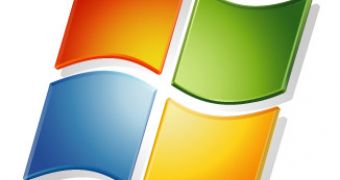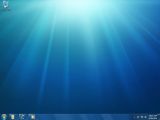One of the elements of the Windows graphical user interface that is evolving past what end users have come to traditionally associate with it is the Taskbar. The GUI evolution delivered by Windows 7 is designed to bring what Microsoft is internally referring to as the Superbar, or the enhanced Taskbar. The new Taskbar was showcased at the professional Developers Conference in Los Angeles at the end of the past month but was disabled in pre-Beta Build 6801 (or Milestone 3) which was served to participants and which subsequently leaked, now being available for download via torrent websites. However, at this point in time, there is a hack which serves to uncover the hidden Superbar even in Windows 7 pre-Beta Build 6801.
“By using the Windows 7 Taskbar, applications can provide more information to the user in more intuitive ways. Each application has a single button on the Taskbar, represented by a 32x32 icon. By default, each application’s running windows are all grouped under this single icon. In addition, the user can pin the application’s shortcut to the Taskbar to serve as an easily accessible application launcher. When the application is running, the button for this running application replaces the pinned launcher, so that the application always has a single, consistent location on the Taskbar,” Microsoft revealed.
The enhanced Windows 7 Taskbar comes complete with a range of application-related information sources for end users to access via such items as: “Destination List, Icon Overlays, Thumbnails for running windows, Thumbnail Toolbars, and Progress bars,” according to Microsoft. At the same time, some classic Taskbar items have been scrapped altogether. One illustrative example in this context is the Quick Launch area. Although the Quick Launch folder is still a part of Windows 7, the actual area on the Superbar is gone.
One new presence on the Windows 7 Superbar is what Microsoft referred to through the development process as Destinations Lists. The Redmond giant indicated that the name might change post Beta, and as it is the case, Microsoft top executives dubbed the feature Jumplists at PDC2008. Jumplists are designed as “shortcuts” enabling users to connect with frequently accessed Internet locations, files or documents faster.
“The Destination List is automatically populated based on frequency and recency of use for file-based applications. Additionally, an application can define custom destinations, enabling it to monitor its own destination usage and their semantics. Applications can also define Tasks (actions within the application that users will find convenient to access directly, for example, composing an e-mail) to appear in their menus,” Microsoft informed.
With the new Progress Bars, users will be able to monitor ongoing tasks and processes performed by their applications without having to keep the programs' window visible. In this regard, progress of functions including file copies, but also CD and DVD burning, downloads and installs will be displayed via the Taskbar buttons, through the Progress Bar.
Other additions to the Windows 7 Taskbar are “Icon Overlays used to convey long-standing status or notifications can be displayed on the bottom right-hand area of the application’s taskbar button. Icons are displayed one at a time, in the order in which they are received,” Microsoft stated.
All applications in Windows 7 will feature Thumbnails. Set up to activate when the user hovers over a certain Taskbar item, the Thumbnails will be large and interactive mini-windows delivering visual guidance and data related to the program. On top of this, “the Thumbnail Toolbar provides a single location for commonly performed key actions related to the window where the user does not need to restore the window, for example, Play/Stop controls for a media application,” Microsoft added.

 14 DAY TRIAL //
14 DAY TRIAL // 
